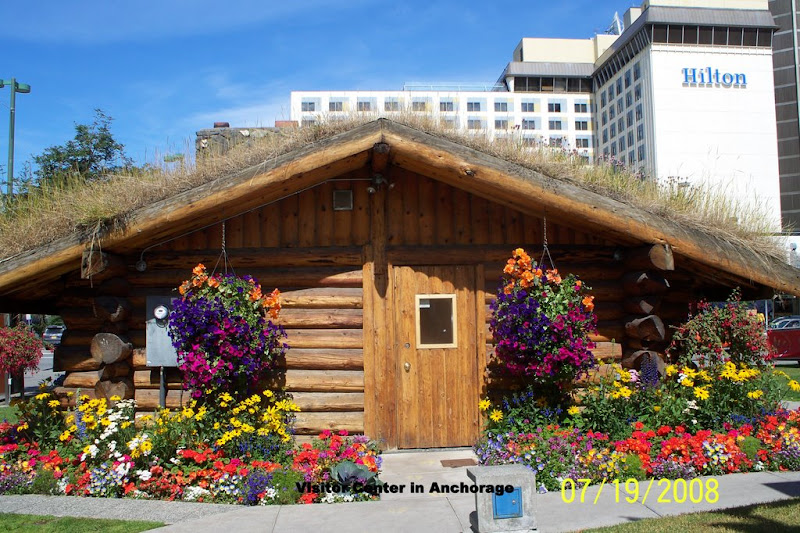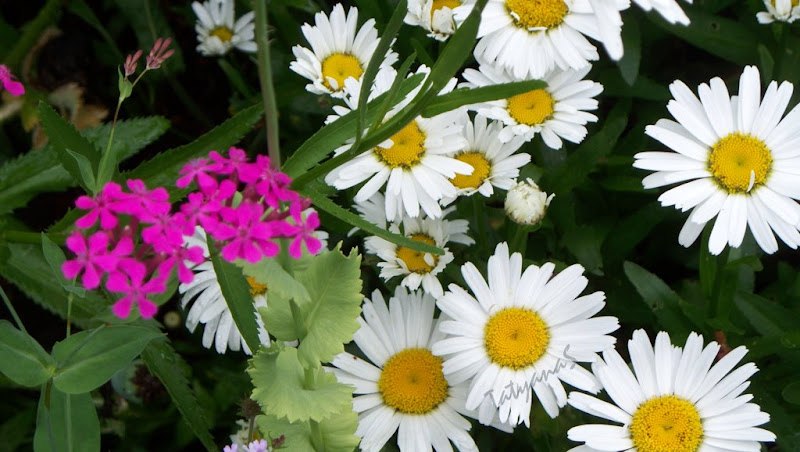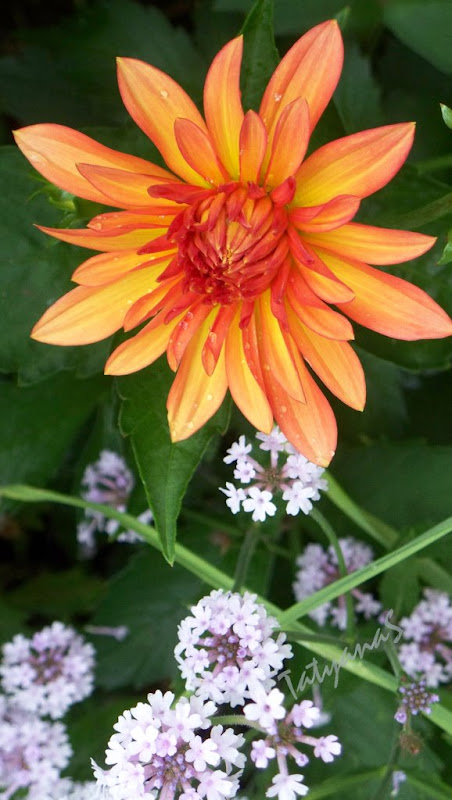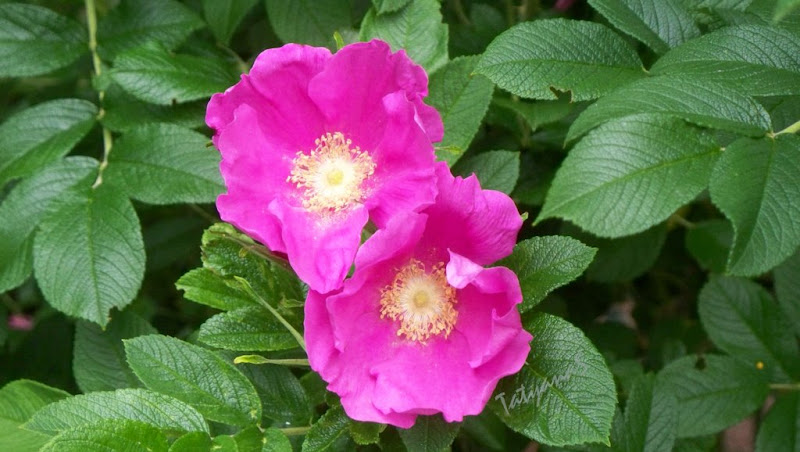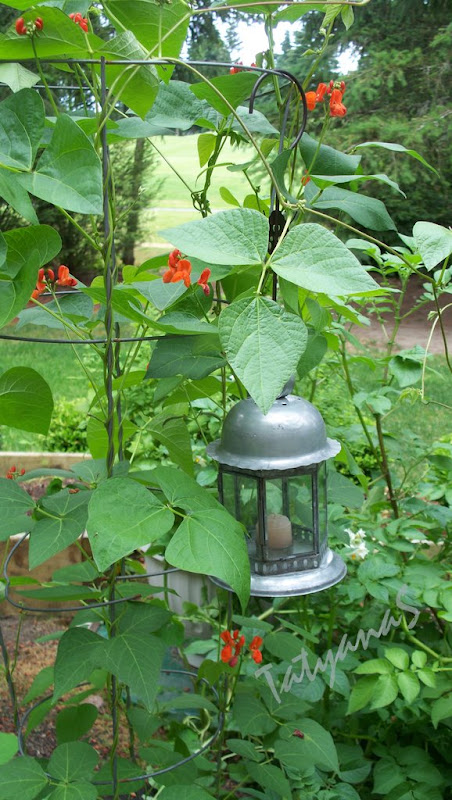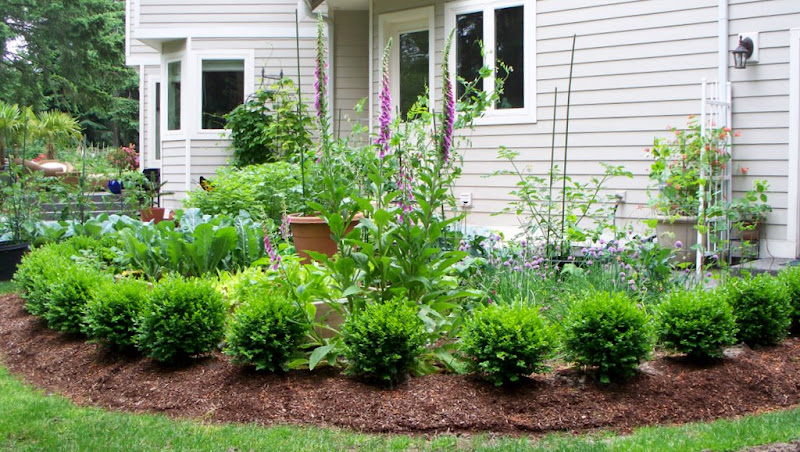There is a plant whose name is known to all Russians. I've heard that name since I was a child. It's in books, legends, fairy tales, etc. Shame on me, but I've never seen it or known how it looks. The plant is called Ivan-Chai, which literally means Ivan Tea. Its leaves can undergo fermentation, like real tea. In Russia, they are often used as a tea substitute and were at one time even exported. In Western Europe, it is known as Kapor tea.
During our recent trip to Alaska, I was reading a book about Alaska by the Russian journalist Vasily Peskov who has been honored with the Global 500 award (BTW, what a wonderful book! I learned tons of interesting facts from it!). He mentioned that Ivan-Chai grows extensively in this state.
I thought: legendary Russian herb grows in Alaska? This is my chance to see how Ivan-Chai looks! There were lots of wild flowers around, including white-headed Cow Parsnip, blue Lupins, perennial geraniums and unknown to me tall plants with pretty purple flowers.
At the same time, a Russian blogger, Voldemar, published a post about Ivan-Chai (http://voldemarmeteorizmus.blogspot.com/2009/07/blog-post_20.html). Looking at his picture, I realized that the Alaskan tall plant with purple blooms and the legendary Russian plant were the same!
Alaskan Fireweed is Russian Ivan-Chai! Great, Tatyana. You needed to come to Alaska to learn how the legendary Russian plant looks. But wait! Looking at the Fireweed/Ivan-Chai, I realized that it grows in my own backyard. Six years ago, when we moved from the Midwest to the Pacific Northwest, I asked my neighbor what were those very tall skinny plants with attractive bright purple blooms. She just waved off my question and commented: "Just a weed!".
Fireweed or (mainly in Britain) Rosebay Willowherb (Epilobium angustifolium) is a perennial herbaceous plant in the willowherb family Onagraceae. It is native throughout the temperate Northern Hemisphere.
Fireweed gets its name because it quickly invades disturbed areas, such as those created after fires (like on the picture below). Frequently confused with purple loosestrife, fireweed has a very different looking flower, although from a distance or driving down the highway it can be hard to tell the two apart.
The young shoots of the Fireweed were often collected in the spring by Native American people and mixed with other greens. They are best when young and tender; as the plant matures the leaves become tough and somewhat bitter. The southeast Native Americans use the stems in the stage. They are peeled and eaten raw. When properly prepared soon after picking they are a good source of vitamin Cand pro-vitamin A. The Dena'ina add fireweed to their dogs' food. Fireweed is also a medicine of the Upper Inlet Dena'ina, who treat pus-filled boils or cuts by placing a piece of the raw stem on the afflicted area. This is said to draw the pus out of the cut or boil and prevents a cut with pus in it from healing over too quickly.
The root of the Fireweed can be roasted after scraping off the outside, but often tastes bitter. To mitigate this, collect the root before the plant flowers and remove the brown thread in the middle.
In Alaska, candies, syrups, jellies, and even ice creamare made from fireweed. Monofloral honey made primarily from fireweed nectar has a distinctive, spiced flavor.
Because fireweed can colonize disturbed sites, even following an old oil spill, it is often used to reestablish vegetation. It grows in (and is native to) a variety of temperate to arctic ecosystems. Be aware: although it is also grown as an ornamental plant, some may find it too aggressive in that context.
Fireweed information is borrowed from Wikipedia.
Dave (http://www.growingthehomegarden.com/) has the great idea about the Worst Weed Wednesday. Fireweed might be the worst weed for some gardeners, but for me, it's probably the best weed! I'll tell you in future if I managed to make a tea from it.

